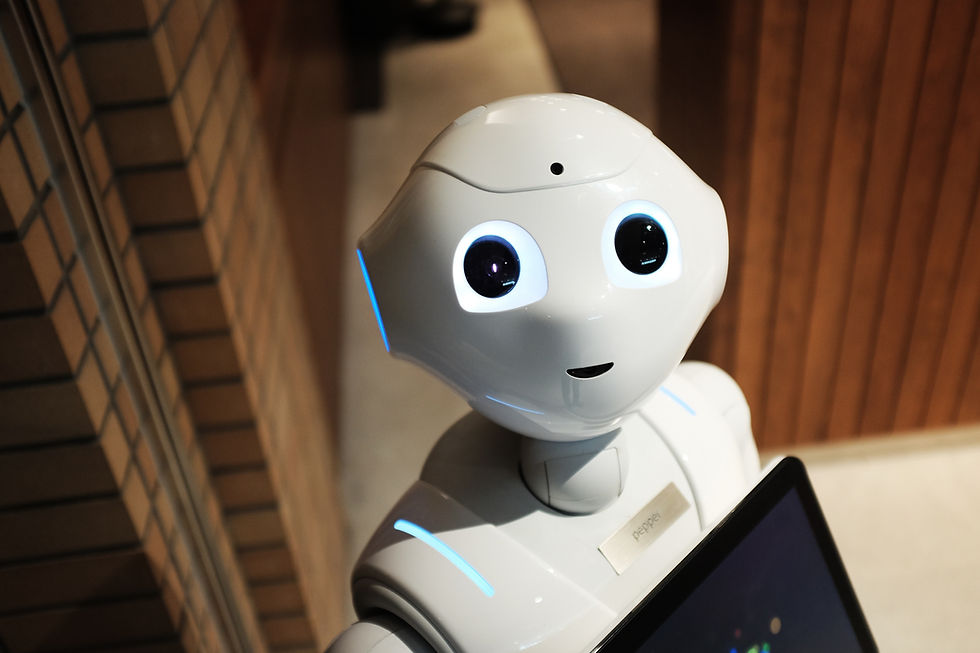Empowering Tomorrow: Generative AI's Role in Robotics and Automation
- Shreshth Virmani
- Aug 25, 2023
- 2 min read

Introduction: The Dawn of Innovative Robotics with Generative AI
In the realm of robotics and automation, innovation has reached unprecedented heights, thanks to the transformative power of Generative Artificial Intelligence (AI). As industries strive for greater efficiency, adaptability, and precision in robotic systems, Generative AI emerges as a game-changing force. By harnessing AI's capabilities, researchers and engineers can design robotic systems that are not only more versatile but also excel in performing intricate tasks. In this article, we delve into the profound influence of Generative AI on robotics and automation, uncovering how it is reshaping the landscape of modern technology.
The Robotic Revolution: A Quest for Excellence
From manufacturing to healthcare, the integration of robotics and automation has revolutionized industries across the globe. However, as demands grow more complex, the need for adaptable and precise robotic systems becomes increasingly paramount. Enter Generative AI, a catalyst for engineering the next generation of robotic innovation.
Generative AI's Evolution: Unveiling Adaptive Robotics
Generative AI's impact on robotics is marked by its ability to revolutionize the design process. Traditionally, engineering robotic systems involved iterative trial and error, limiting the pace of innovation. With Generative AI, researchers can simulate and explore countless design possibilities, enabling the creation of robotic systems that adapt to dynamic environments and perform intricate tasks with precision.
Adaptability Beyond Limits: Industry Applications
Generative AI's influence extends across various industries. In manufacturing, AI-driven robotics optimize production lines by swiftly adapting to changes in demand and process requirements. In healthcare, robotic systems designed using Generative AI assist in delicate surgical procedures, offering surgeons enhanced precision and reducing patient recovery times.
Precision Redefined: Complex Task Execution
Complex tasks that were once considered beyond the reach of robots are now within grasp, thanks to Generative AI. By simulating and analyzing various design iterations, researchers can optimize robotic systems for specialized tasks such as intricate assembly, delicate manipulation, and even hazardous operations in environments unfit for human presence.
The Future of Robotics Design: Collaboration and Creativity
Generative AI serves as a creative partner for engineers and researchers. It doesn't replace human creativity; instead, it enhances it. Engineers work alongside AI systems, leveraging their computational power to rapidly explore design variations and identify optimal solutions.
Technology Solutions Providers: Architects of Innovation
In the realm of robotics and automation, technology solutions providers play a crucial role. They develop platforms that integrate Generative AI into robotics design workflows, enabling engineers to harness AI's capabilities effectively. These platforms empower engineers to accelerate the design process, reduce development time, and create robotic systems that excel in a rapidly evolving landscape.
Conclusion: Transforming the Future of Robotics
Generative AI stands as a cornerstone of innovation, poised to redefine the future of robotics and automation. By enabling engineers to explore, experiment, and optimize designs in ways that were previously unimaginable, Generative AI is propelling robotics to new frontiers. As technology solutions providers continue to advance these capabilities, industries around the world are on the cusp of a new era—an era where robotic systems are adaptable, precise, and capable of revolutionizing how tasks are executed across sectors.




Comments